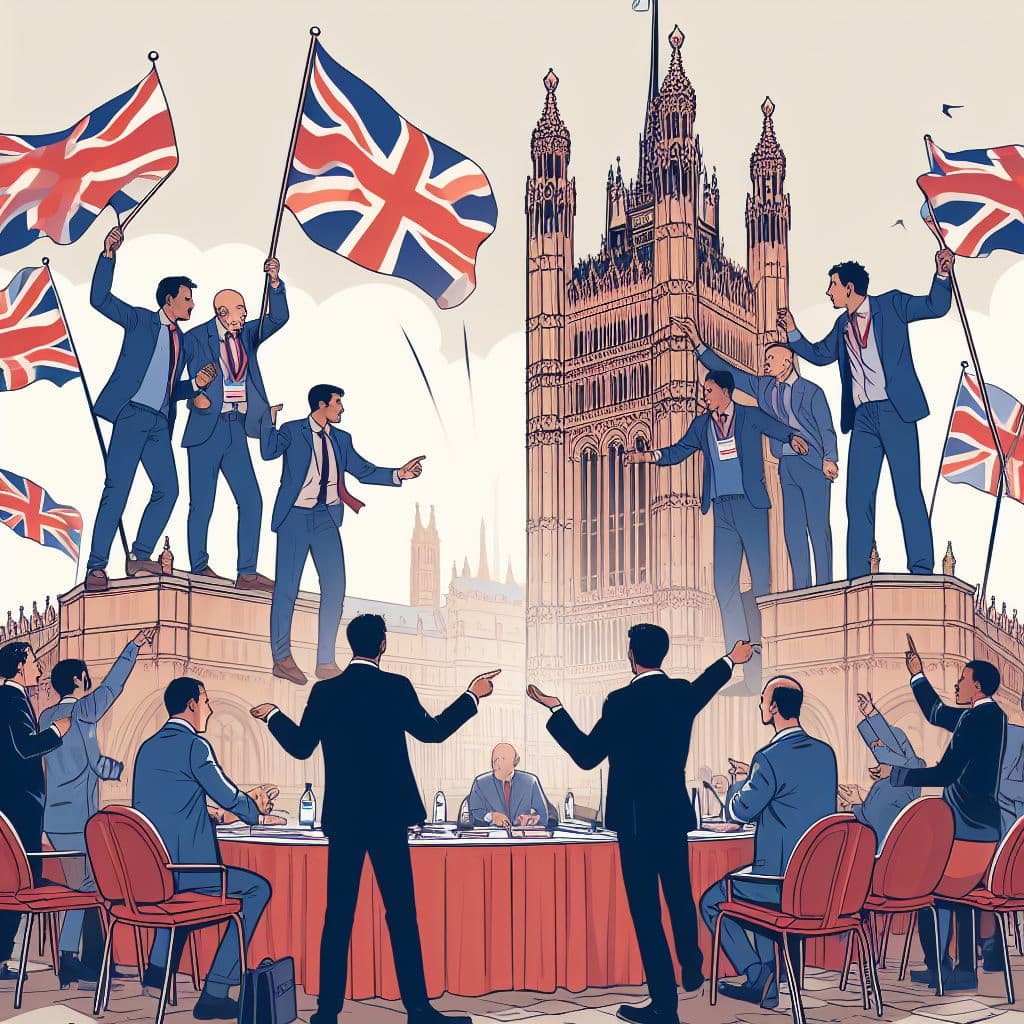Why we should not obsess about headline net migration figures
SUGGESTED



I understand the intuitive response to landmark figures. But I also question why people, particularly those who broadly subscribe to liberal principles and free-market economics, are hyperfocusing on arbitrary headline figures. For one thing, migration is unlikely to remain that high for long, with schemes for refugees from Ukraine, Hong Kong, and Afghanistan creating a short-term spike. Regardless, one million people is a lot of people, but one million pounds is also a high annual salary – should we start getting squishy on our principles and economic ideas by joining the far-Left’s call for punitive wealth and income taxes for high earners? Should we buy into the idea that central planners should set arbitrary targets based on the vibes that certain numbers give off?
The answer to both, of course, is no. There is nothing special that happens when that – or any other – threshold is crossed. As with all complex economic phenomena, we lack and will always lack, the knowledge to correctly determine the optimal number or range of anything that matters in the economy.
I believe that the economically and morally optimal policy is open borders. However, I accept that open borders or anything close to it is political infeasible in most Western states. But that does not mean embracing arbitrary quotas. Proposals exist that could minimise the role of central planning and maximise the role of spontaneous economic order, while addressing some of the British public’s concerns.
As Britain was about to leave the European Union in January 2019, the IEA published Immigration: Picking the low-hanging fruits by our Head of Political Economy Kristian Niemietz. It highlights that some types of immigration enjoy overwhelming popular support, even among people who claim to oppose “immigration” in the abstract. This includes immigration from developed countries, i.e. countries that are about as rich, or richer, than the UK.
There is no reason why the government cannot open the borders to developed English-speaking countries, the EFTA countries, and the 14 member states of the European Union before the bloc’s expansion in 2004. We could also add the more prosperous parts of Eastern Europe, such as Poland, the Czech Republic and the Baltic states, as they grow to match our own income level (which would coincide with both a more skilled labour force and a reduction in the pull factors for immigrants to move to the UK). Niemietz proposes free movement with countries where GDP per capita exceeds 80% of the UK level.
He also shows that skilled migration is popular with the British public, which opens the possibility of an uncapped and simplified Tier 2 visa system for applicants from any country.
Within that context, we could employ a contributory welfare system, whereby migrants must have paid into the system for a certain number of years before claiming anything back. We could take a more hard-line approach to addressing concerns about welfare being a migration pull factor by employing a long-term ban on claiming welfare or requirements for new migrants to prove that they have some combination of a job offer, firm business proposal, and sufficient funds to support themselves and any dependents.
There could also be a priced-based solution to our immigration dilemma. In 2011, the IEA published The Challenge of Immigration: A Radical Solution by the late Nobel Prize winner, Professor Gary Becker, who proposed setting a price for visas. Setting a price and awarding visas to those willing to pay would be more efficient than our current system; it would relieve the government of the need to manage an arbitrary immigration quota and of the bureaucracy required to ensure that visa applicants fulfil a lengthy list of politically motivated economic and social qualifications.
Immigration-sceptics who worry about the fiscal drain of new migrants or the disruption of social solidarity can take heart in knowing that new immigrants have effectively paid a deposit to be here, providing money up front to the public finances and having clearly demonstrated their desire to contribute positively to British society. It would also encourage migrants from poorer countries (who would start at a comparative economic disadvantage) to save their capital and invest in their own skills as part of their migration journey. The money raised could even be invested in a ‘social solidarity fund’, which could be spent on tax relief or cash transfers to give native Brits a short-term boost from more migration.
Crucially, both proposals would allow us to maximise the economic potential of dynamic and free immigration while placating concerns about immigration by minimising the risk of it becoming a net drain. Neither would be my ideal system, but they are more feasible within a political economy where immigration-scepticism is high, and which allows immigrants to be easily scapegoated by governments deflecting responsibility for their policy failures on housing, welfare, and public services. Both systems would still place limits on my migration – they are not open-borders systems – but they would not impose arbitrary caps, explicit or implicit. Overall numbers could still be quite high under either system, at least in some years.
That said, whether we’re talking about free trade, house building, or immigration, the moral and economic imperative remains that governments must resist the temptation of enacting policies which benefit concentrated incumbent interests (domestic producers, property owners, or anti-migration voters) by dispersing costs on the rest of us. Centrally planned, arbitrary quotas do just that. I hope that if we can persuade voters and policymakers to abandon the quota-based mindset on immigration, we can do the same in areas like housing, education, healthcare, and trade, where a more dynamic approach is just as vital.
1 thought on “Why we should not obsess about headline net migration figures”
Comments are closed.




Who is the ‘we’ in the headline? Does it include the many people around the country unable to find affordable housing, school places for their children, or GP appointments from rapid population growth through immigration?
Does it include the people whose culture, traditions, and language are increasingly diluted by people with no loyalty to Britain, people with different languages and history who are turning home into a giant hotel? How do immigrant become us?
In the 2019 election the main question candidates in Bradford faced on the doorstep was what was their position on Kashmir.
Would the proposed price control for a visa, the upfront deposit, bear any relation to the country’s resource level for absorbing yet more people on this small island? The proposal appears to be to allow foreigners to come here and price us out of our homes and other resources except for a ‘short term boost’ to native Brits from the visa payments. Unrealistic and unworkable.
The multiculturalism and multilingualism of immigration is already causing the breakdown of social trust.